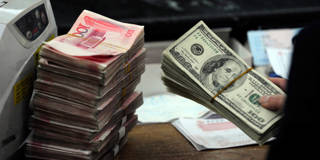Releasing the Renminbi
China’s authorities are committed to advancing the shift toward a market-driven economy, with a fully flexible exchange-rate regime. That means that, while it can credibly commit not to keep the value of the renminbi artificially low, it must reject US demands to keep the exchange rate stable against the dollar.

BEIJING – The United States is reportedly pushing China to agree to keep the value of the renminbi stable, as part of a deal to end the trade war between the world’s two largest economies. It is a demand that China must think twice about before accepting.